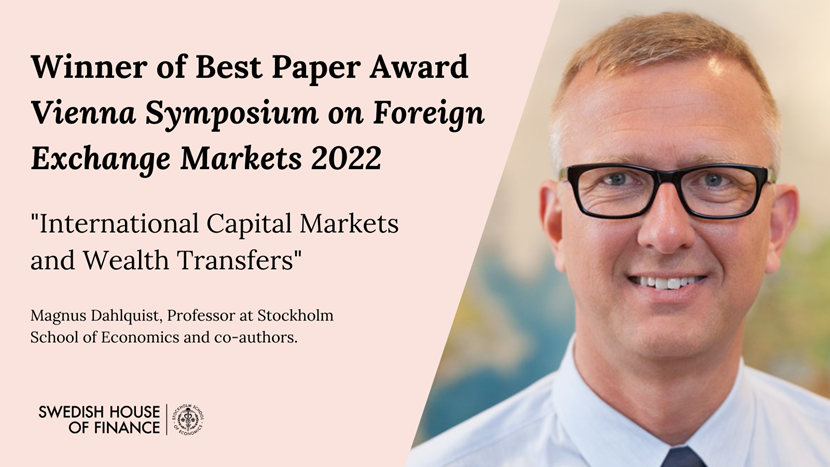International Capital Markets and Wealth Transfers
Aug. 26, 2022
The Swedish House of Finance is pleased to announce that Professor Magnus Dahlquist and co-authors have received the Best Paper Award at the Vienna Symposium on Foreign Exchange Markets 2022. They got the award for the paper “International Capital Markets and Wealth Transfers.”

As capital markets around the world are linked, a shock originating in one market propagates to the rest of the world. During times of global stress, financial markets worldwide suffer losses. However, not all markets are affected alike – some fall more than others. In this paper the authors develop a model that illustrates the mechanisms that explain how a rich country like the US can receive a wealth transfer from the rest of the world in times of stress.
Magnus Dahlquist has written the paper together with Christian Heyerdahl-Larsen, Anna Pavlova, and Julien Pénasse.
This award is organized by ZZ Vermögensverwaltung and POK Pühringer Privatstiftung in collaboration with WU Vienna.
Abstract
In periods of global stress, there are large movements in exchange rates and asset prices. Currencies of developed economies appreciate, with the US dollar appreciating the most. Global stock markets fall, but the US market falls by less. While the external balance sheet of the US is riskier and its net foreign assets fall, this effect is overturned by the dollar appreciation, resulting in a wealth transfer to the US. To rationalize these facts, we build a general equilibrium model with time-varying risk appetites that produces asymmetric portfolios. Richer countries have more appetite for risk, levering up their external portfolios by borrowing from poorer countries. Consequently, their net foreign assets fall in periods of stress, yet there is a wealth transfer from poor to rich countries due to currency appreciations. The model delivers time-varying currency risk premia, matches key asset pricing moments, and produces realistic external portfolios.
Keywords: Currency risk premium, habit formation, net foreign assets, wealth transfers
